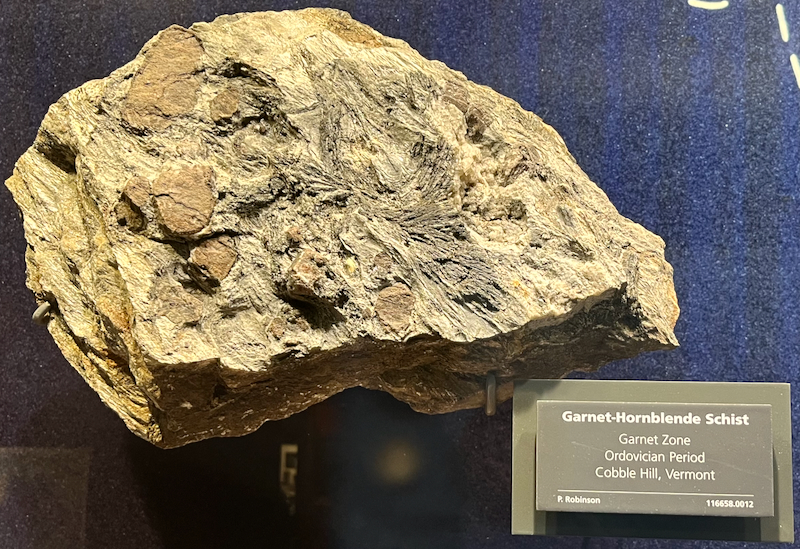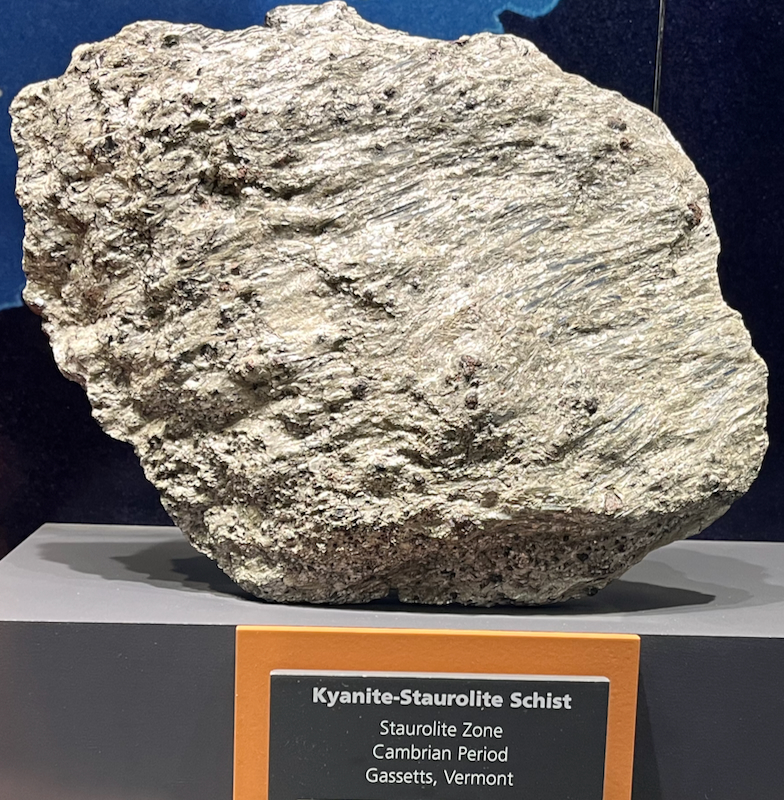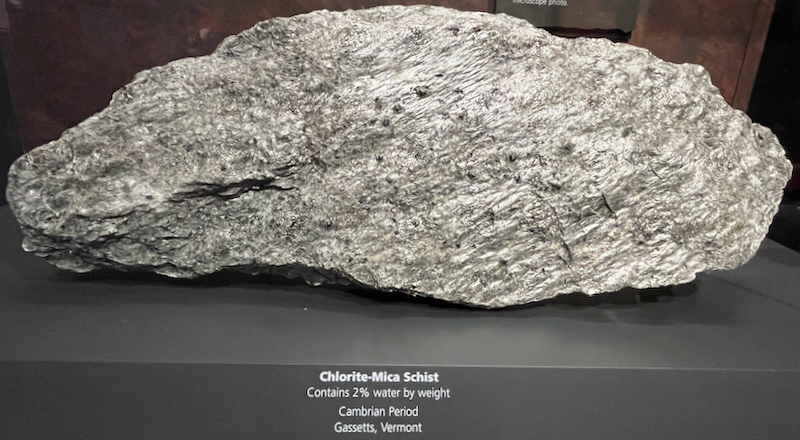Schist
Another well-known rock when it comes to geologist jokes, schist is an innocent metamorphic rock just minding its own business. When you find a dark gray silvery rock that looks like it has all these little waves in it, it’s probably schist. One of the more common types of schist is called mica schist (because it has lots of muscovite in it), which can look like it’s made of glittery pieces of silver. If you’ve read about muscovite, you know that it easily separates into layers, and schist acts similarly, thanks to minerals like muscovite, talc, graphite, and chlorite that are in it and like to form layers. In fact, its name comes from the Greek word “to split.” It’s pretty common for schist to have garnets in it too, looking like black or red lumps. Like mica schist, the different types of this rock are named after minerals that occur in it in large amounts. So you’ll hear about garnet schist, kyanite schist, talc schist, graphite schist, chlorite schist, and others. One of the main ways schist forms is when tectonic plates run into each other and cause mountains to rise up. The pressure and heat from the collision causes sedimentary and other rocks to change (metamorphose) into schist, which accounts for most of the rock the mountains are made of. The Green Mountains of Vermont are one example.
| Formula | Group or Type | Shape | Hardness | Specific Gravity | Streak | Luster |
|---|---|---|---|---|---|---|
| — | — | — | — | — | — | — |



